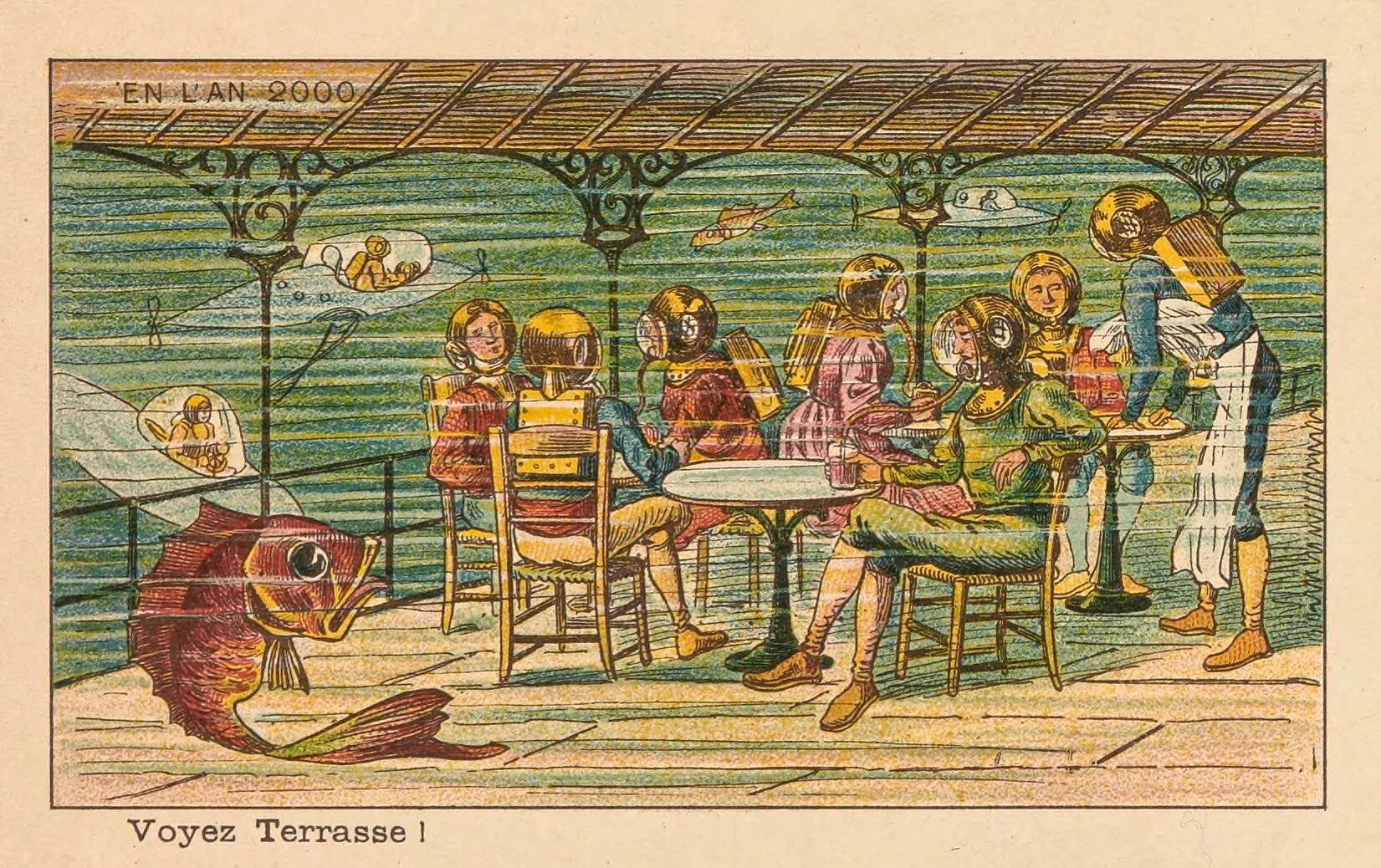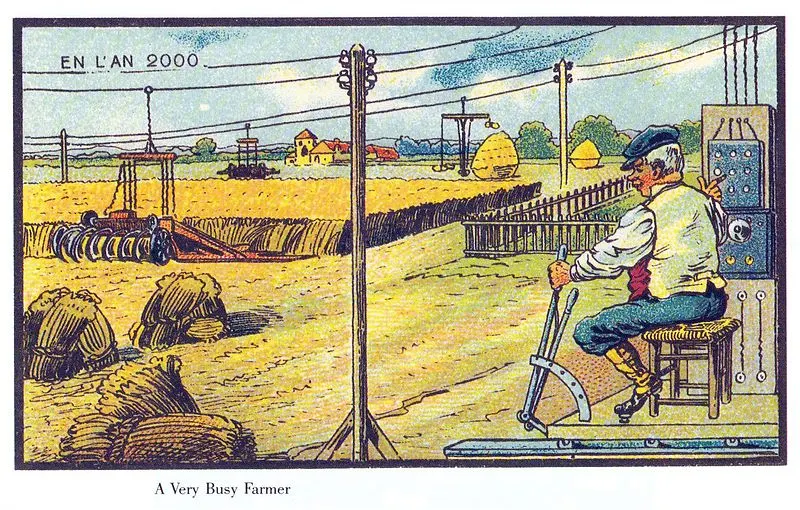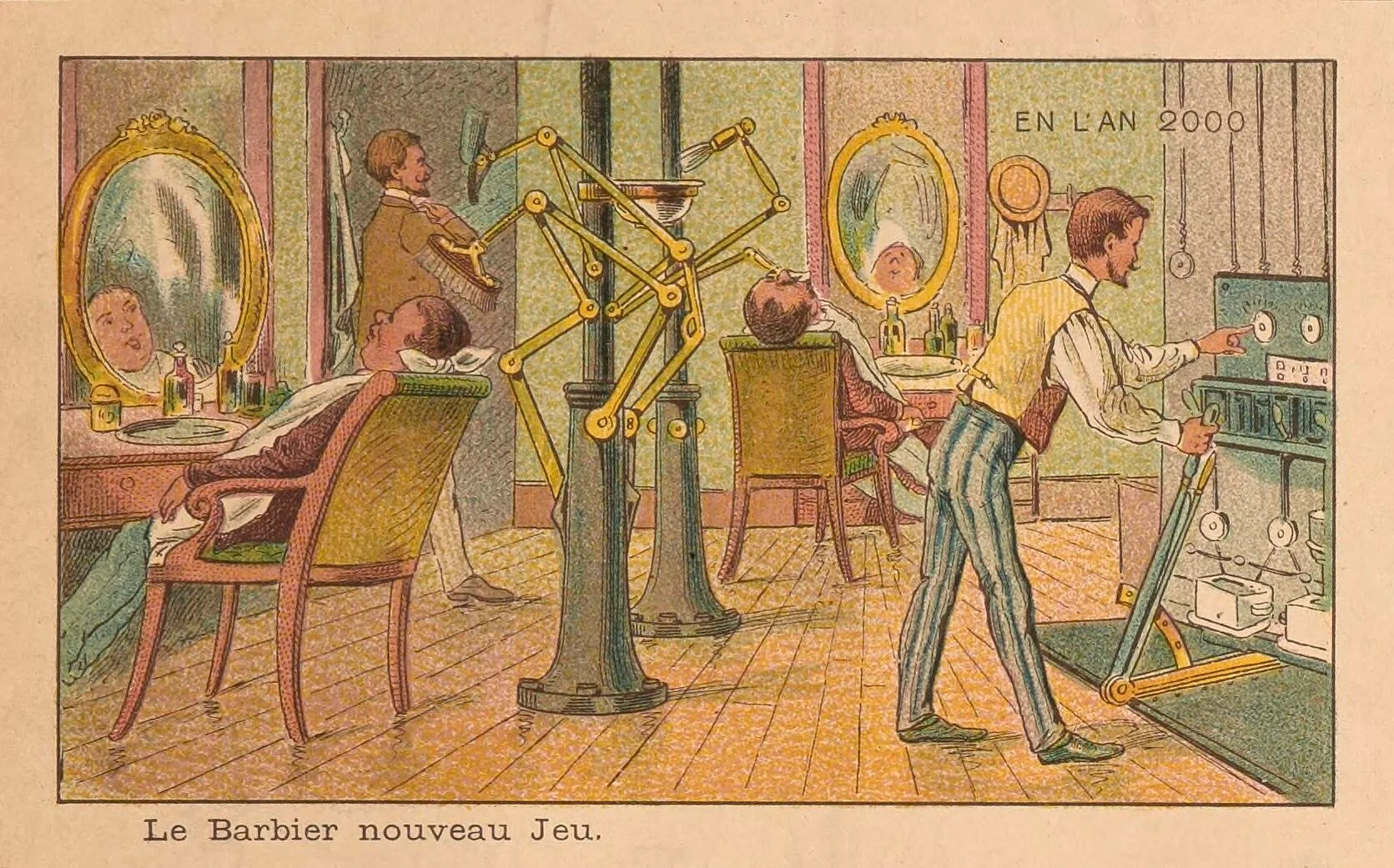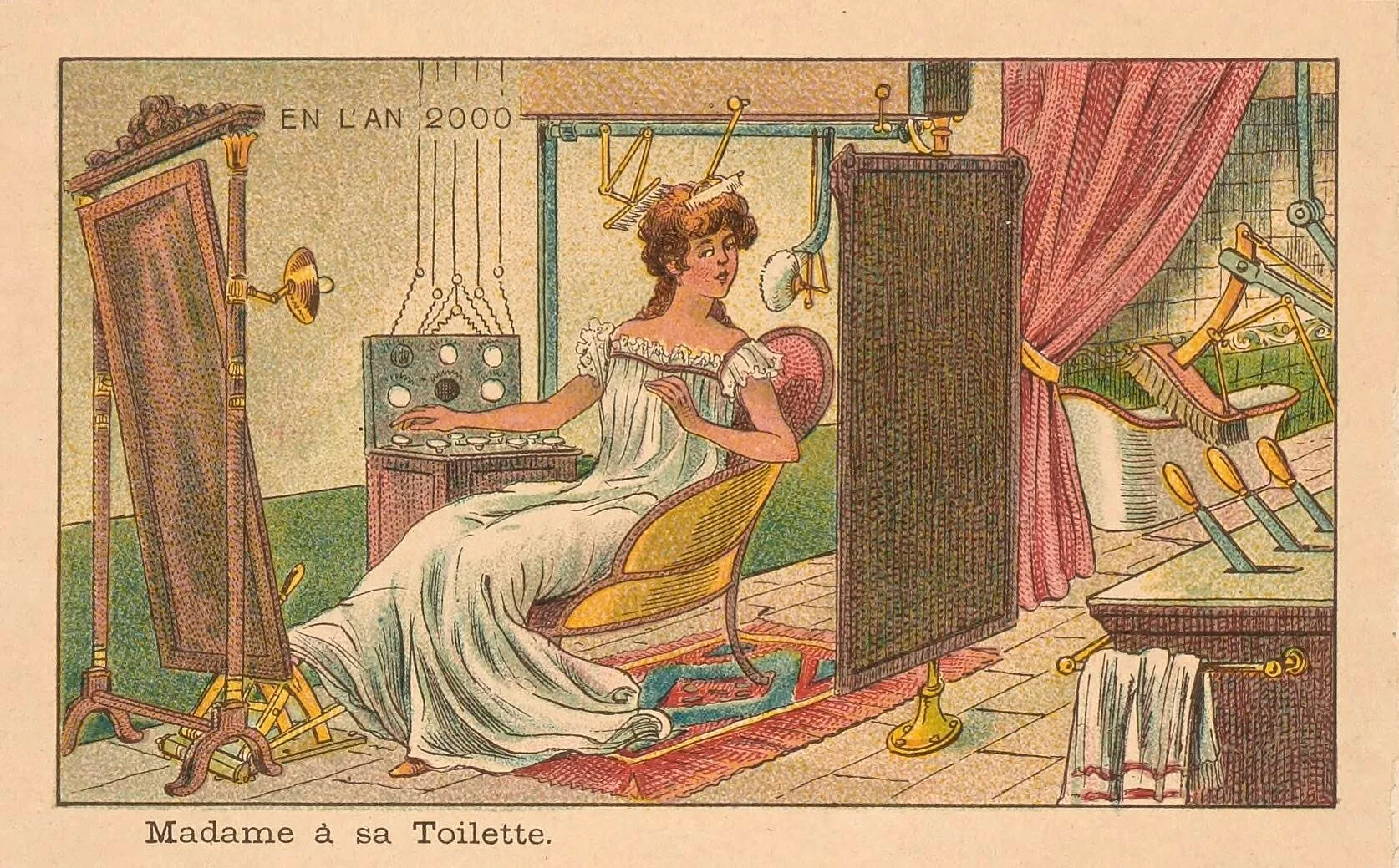Atomic physicist Niels Bohr is famously quoted as saying, “Prediction is very difficult, especially if it’s about the future.” Yet despite years of inaccuracies, magazines persist in publishing think pieces on where we might be in the coming decades or centuries. It provides us with a sense of hope, even though inventions like personal jetpacks and moon colonies are long overdue.
However, it's Isaac Asimov who seems to possess the only set of postcards titled En L’An 2000, a collection of around 87 artist cards that were originally distributed as inserts in cigar boxes in 1899, just in time for the 1900 World Exhibition in Paris. Translated as “France in the 21st Century,” these cards feature interpretations by Jean-Marc Côté and other illustrators of how we might be living... well, 23 years ago.
The history behind the production of these cards is quite convoluted, with the original commissioning company going out of business before distributing them. Whether this company was a toy manufacturer or a cigarette company remains unclear. Furthermore, it's uncertain whether the ideas were provided to the artists or if they came up with them independently.
Upon examining these prints, now hosted at The Public Domain Review, one immediately notices the absence of space travel, despite Jules Verne's publication of From the Earth to the Moon in 1865 (which later influenced Georges Méliès' A Voyage to the Moon in 1902). However, the artists did envision various underwater scenarios, such as a whale-drawn bus, a croquet party at the bottom of the ocean, and large fish being raced like thoroughbred horses.

Interestingly, some of the depicted inventions did come true. For instance, the “Advance Sentinel in a Helicopter” concept has been a reality for decades, documenting traffic and car chases, and feeding the footage into our televisions. Additionally, much of farm work is now automated, and what was once known as “Electric Scrubbing” is now recognized as a Roomba.
For a detailed examination of each future vision depicted on these cards, one may refer to Isaac Asimov’s 1986 publication, Futuredays: A Nineteenth Century Vision of the Year 2000, available on Amazon. Alternatively, a gallery of images can be viewed on The Public Domain Review website.
Would you like a glimpse into the future? Then these books may interest you.
- The Future Is Faster Than You Think: How Converging Technologies Are Disrupting Business, Industries, and Our Lives
- AI 2041: Ten Visions for Our Future
- What We Owe the Future Paperback












This post may contain affiliate links. As an Amazon Associate, I earn from qualifying purchases.
Comments
Post a Comment